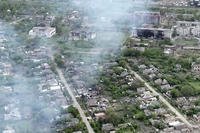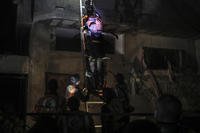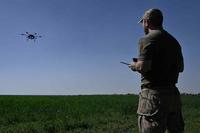The Air Force is looking at a range of airframes from Gulfstream jets to Bombardier airplanes and Boeing 737-700’s --- as potential replacements for its aging fleet of 16 E-8C Joint Surveillance Target Attack Radar System, or JSTARS, airplanes.
The service has allocated $70 million in its fiscal year 2015 budget request for its JSTARS recapitalization program, an effort which seeks to build and field a new version of its surveillance planes by 2022, said Col. Henry Cyr, Commander of the 461st Air Control Wing, Robins Air Force Base, Ga.
“The next-generation JSTARS will replace airframes built in the mid to late 60s. They have the highest number of flying hours on them of any plane in the Air Force. They were refurbished in the 80s and 90s, but they are still old airplanes with some of the most modern technology inside,” Cyr said.
The current JSTARS, manufactured by Northrop Grumman, uses a 24-foot long radar capable of synthetic aperture radar which can paint a rendering or “picture” of the terrain below and Ground Moving Target Indicator, or GMTI, mode -- which enables it to detect moving objects. The platform is uniquely configured for command and control, battle management as well as intelligence, surveillance and reconnaissance, or ISR, missions, Cyr said.
“The intent is to build a capability that provides an equivalent to JSTARS. The Air Force is not planning to make it fundamentally different or make it significantly better in performance. The current capability is fantastic. The initial intent is to get a replacement out quickly and have the ability to spiral in better capability later on,” Cyr said.
With its ability to monitor the ground below and process large areas of collected data, images and information, the JSTARS can help orient smaller ISR platforms, such as a Predator drone, and tell them where to go look more closely with higher fidelity sensors, Cyr explained.
The current JSTARS is based on a four-engine Boeing 707. Of the 16 JSTARS currently in the Air Force inventory, 11 of them are operational. The JSTARS is the only platform technically able to simultaneously perform command and control as well as ISR, Cyr said.
The crew of a JSTARS, which can go up to 21 people or more, includes a navigator, combat systems operator, intelligence officers, technicians and battle management crew officers, Cyr added.
Cyr said the Air Force is finishing up its Capabilities Design Document for the JSTARS recapitalization which will help determine the framework for the type of air vehicle needed for the mission. The document will also help the service figure out other factors for the platform such as crew size, data links and radar, Cyr added.
As for the airframe, Cyr said the service is examining a range of options.
“The next-generation JSTARS will not be a wide-body airplane or a 767 like the tanker. It will be business jet,” he said.
The Air Force hopes to engineer the platform such that it can easily accommodate new technologies such as sensors, computers, avionics and other electronic systems, as they emerge.
Although initially constructed as a Cold War technology to monitor Soviet Union tank movements in eastern Europe, the JSTARS has proven very helpful in key areas such as near North Korea, Iraq and Afghanistan. The platform has also succeeded in performing maritime missions in the pacific theater, Southcom (U.S. Southern Command) and Central Command areas of responsibility.
The JSTARS has been able to help meet the fast-expanding maritime demand for ISR and command and control due to an upgrade of its radar to Enhanced Land/Maritime Mode, Cyr explained.
“Enhanced Land Maritime Mode has made the platform more effective and allowed us the flexibility to work with maritime commanders,” he said.
JSTARS has even expanded into homeland defense and law-enforcement missions as well, Cyr added.
Gulfstream, Northrop Grumman, Bombardier and Boeing are all among the vendors expected to compete to offer the recapitalized JSTARS plane.
“We’ve done some analysis on a lot of different platforms and the platform that we think best meets the Air Force requirements for the JSTARS mission is our offering – a 737-700 Boeing business jet,” said Rod Meranda, JSTARS business development lead, Boeing.
Gulfstream plans to offer the G650, a twin-engine business jet, and Bombardier will likely offer its Global 6000, a long-range business jet, according to a report in FlightGlobal.com. Northrop Grumman officials tell Military.com they are testing a G550 aircraft, a 96-foot long business jet configured to integrate with JSTARS technologies.
One analyst said the Air Force plan makes sense and is achieve-able, provided procurement money is prioritized. The G650 and Bombardier Global 6000 are both smaller, lower-cost options than the Boeing 737-7000 business jet, said Richard Aboulafia, vice president of analysis at the Teal Group, a Va.-based consultancy.
“The size of the plan chosen will come down to what kind of battle management systems on board. The Boeing 737-700 will give you a lot more space for battle management consuls, radar and other technologies. However, that would be less affordable than the other options,” Aboulafia told Military.com.








